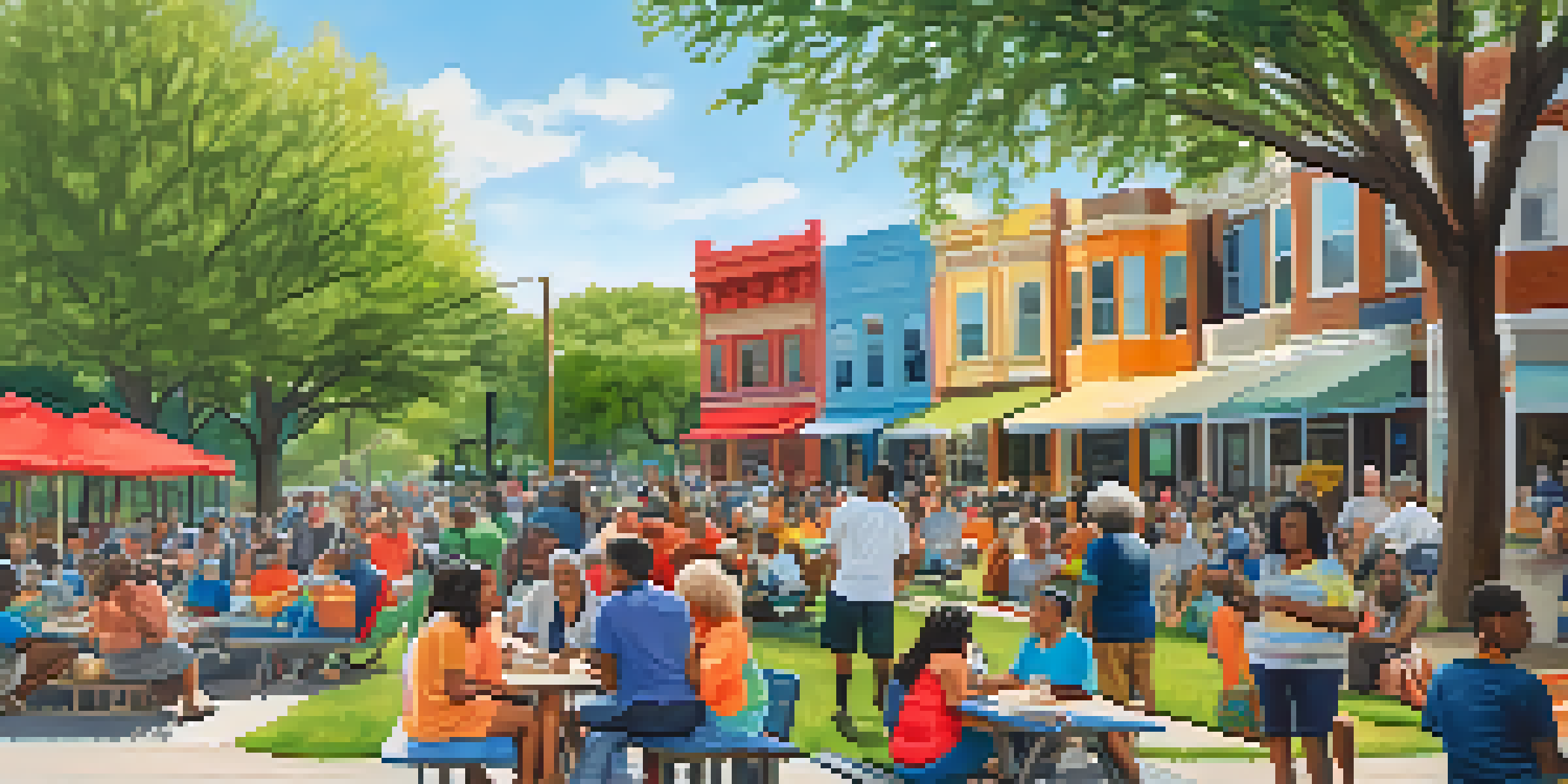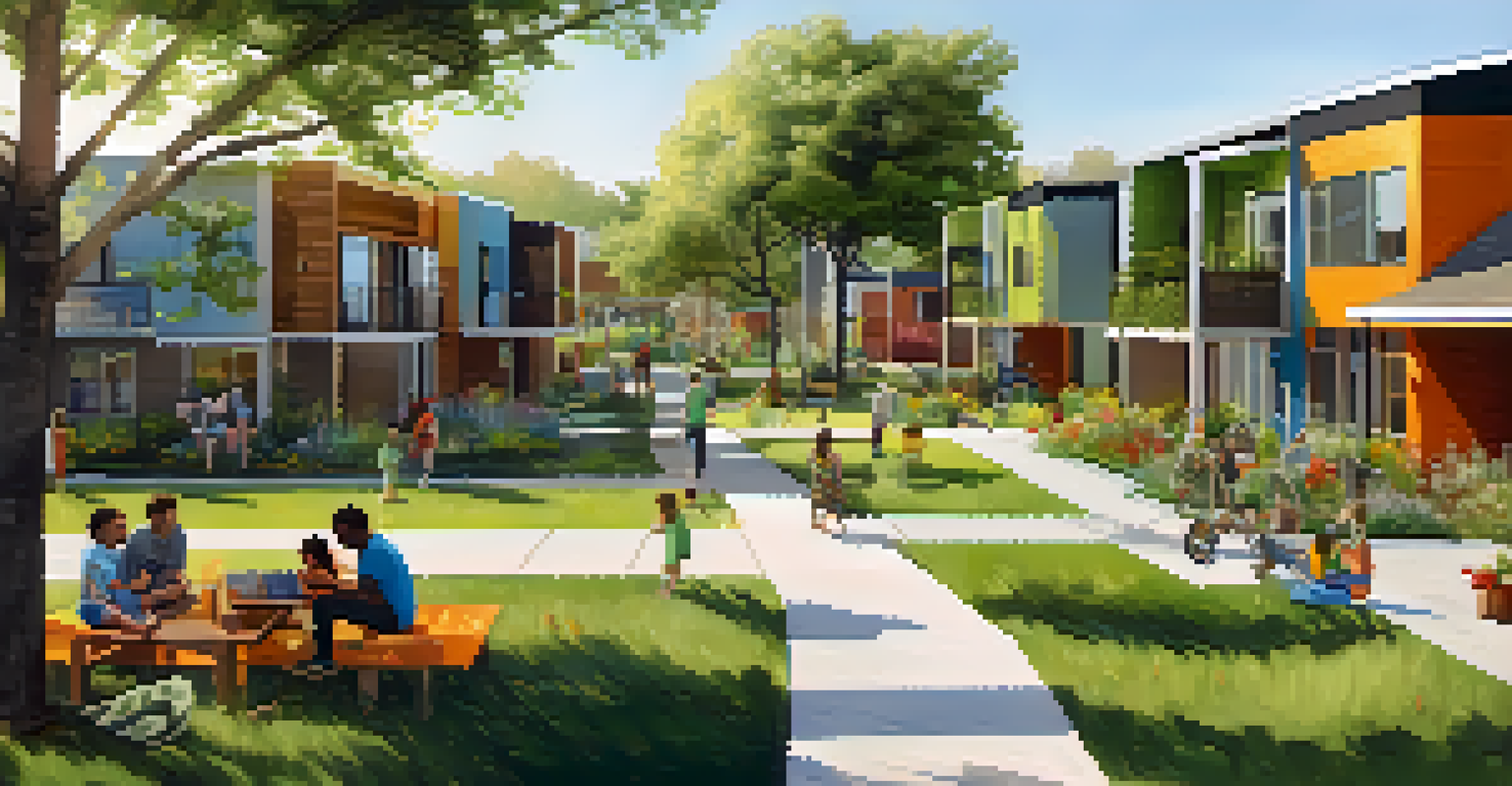Affordable Housing Initiatives in Austin: Current Landscape

Understanding Affordable Housing in Austin's Context
Affordable housing often feels like a buzzword, but what does it really mean for Austin? Essentially, it refers to housing options that are financially accessible to a broader range of residents, especially those earning lower to moderate incomes. In a city where the cost of living has surged, understanding this term is crucial for both current and prospective residents.
The affordable housing crisis is a complex issue that requires collaboration and creativity from all stakeholders to ensure that everyone has a safe place to call home.
Austin's rapid growth has made it a hotspot for tech companies and new residents, driving up housing prices. This has created a pressing need for affordable housing solutions to ensure that the city remains inclusive. Without this, many long-time residents may find themselves priced out of their own neighborhoods.
Efforts to tackle these housing challenges are underway, with a combination of city initiatives, public-private partnerships, and community advocacy. Each of these plays a crucial role in shaping the landscape of affordable housing in Austin, highlighting the importance of collaboration in addressing this issue.
Current Affordable Housing Programs and Initiatives
Austin has several programs aimed at increasing affordable housing availability. One notable initiative is the city's 'Affordable Housing Bond,' which allocates funds for the development of affordable units. By investing in these projects, the city aims to create sustainable housing options for residents, particularly those in need.

Another significant program is the 'Development Incentives' offered to developers who commit to including affordable units in their projects. This approach not only encourages new construction but also helps integrate affordable housing into various neighborhoods, promoting diversity and community cohesion.
Need for Affordable Housing in Austin
Austin's rapid growth has driven up housing prices, making affordable housing essential for maintaining inclusivity.
Additionally, the 'Housing Trust Fund' plays a pivotal role in financing affordable housing projects. Whether it's through grants or low-interest loans, this fund aims to support initiatives that directly benefit low-income families, creating opportunities for stable housing.
The Role of Non-Profit Organizations in Housing
Non-profit organizations are vital players in Austin's affordable housing landscape. Groups like 'Habitat for Humanity' and 'Austin Habitat for Humanity' provide not only housing but also educational resources for families. By helping residents understand homeownership, these organizations empower families to make informed decisions.
In a rapidly growing city like Austin, we must prioritize affordable housing to maintain our community's diversity and inclusivity.
These non-profits often collaborate with local government and private developers to maximize resources and impact. This collaboration can lead to innovative solutions, such as mixed-income developments that ensure a diverse community. It’s a testament to how community-focused approaches can address complex housing issues.
Moreover, non-profits often advocate for policy changes that benefit affordable housing initiatives. Their voices are crucial in shaping local housing policies, ensuring that the needs of marginalized communities are represented and addressed.
Challenges Facing Affordable Housing Initiatives
Despite the efforts and initiatives in place, affordable housing in Austin still faces significant challenges. One major hurdle is the rising land costs, which can deter developers from building affordable units. As land prices continue to climb, it becomes increasingly difficult to maintain affordability in new developments.
Additionally, public opposition to affordable housing projects can stymie progress. Some community members express concerns about potential impacts on their neighborhoods, leading to resistance against new developments. This opposition can slow down or even halt projects that are crucial for increasing housing availability.
Role of Non-Profits in Housing
Non-profit organizations play a crucial role in providing housing and advocacy, empowering families and influencing local policies.
Finally, funding remains a persistent challenge. While various programs exist, securing consistent and adequate funding for affordable housing initiatives is essential. Without financial resources, many promising projects may struggle to get off the ground, leaving the demand for affordable housing unmet.
Community Engagement and Advocacy Efforts
Community engagement is essential in driving affordable housing initiatives in Austin. Local residents often take the lead in advocating for their neighborhoods, voicing their needs and concerns to city officials. This grassroots involvement not only raises awareness about housing issues but also fosters a sense of ownership and responsibility among residents.
Organizations and coalitions, like the 'Austin Tenants Council,' play a critical role in mobilizing community members. They provide resources, support, and education, helping residents understand their rights and navigate housing challenges. This empowerment is key to ensuring that the voices of those most affected by housing policies are heard.
Additionally, public forums and workshops provide platforms for discussion, allowing community members to share their experiences and ideas. These interactions can lead to collaborative solutions, ensuring that affordable housing initiatives are not only effective but also reflective of the community's needs.
The Impact of Technology on Affordable Housing
Technology is increasingly influencing how affordable housing initiatives are developed and managed in Austin. From innovative building materials to smart home technologies, advancements can reduce construction costs and improve living conditions. This integration of technology can make affordable housing more attractive and viable.
Moreover, apps and online platforms are being utilized to connect residents with available housing resources. These tools can streamline the search for affordable units, making it easier for families to find suitable homes. By leveraging technology, organizations can enhance the accessibility of affordable housing information.
Challenges in Housing Initiatives
Rising land costs, community opposition, and funding shortages pose significant challenges to affordable housing development in Austin.
In addition, data analytics play a crucial role in identifying areas of need. By analyzing trends and demographics, city planners can make informed decisions about where to focus affordable housing efforts. This tech-driven approach ensures that resources are allocated effectively, addressing the most pressing needs in the community.
Looking Ahead: The Future of Affordable Housing in Austin
As Austin continues to grow, the future of affordable housing will depend on sustained efforts and innovative solutions. City officials, developers, and community members must work together to create comprehensive strategies that address current challenges. This collaborative mindset will be key in shaping a more inclusive city.
Moreover, the ongoing dialogue around affordable housing must include diverse perspectives. Engaging various stakeholders, including residents, non-profits, and businesses, will ensure that initiatives are well-rounded and effective. Listening to the community's needs will help build trust and foster a sense of shared purpose.

Ultimately, the goal is to create a city where everyone has access to safe, affordable housing. With continued commitment and creativity, Austin can pave the way for sustainable housing solutions that benefit all residents, making it a model for other cities facing similar challenges.